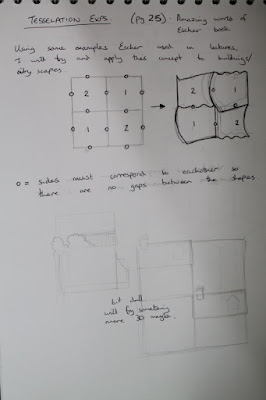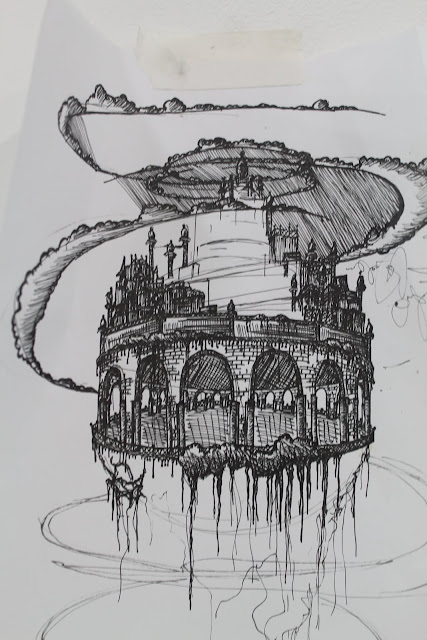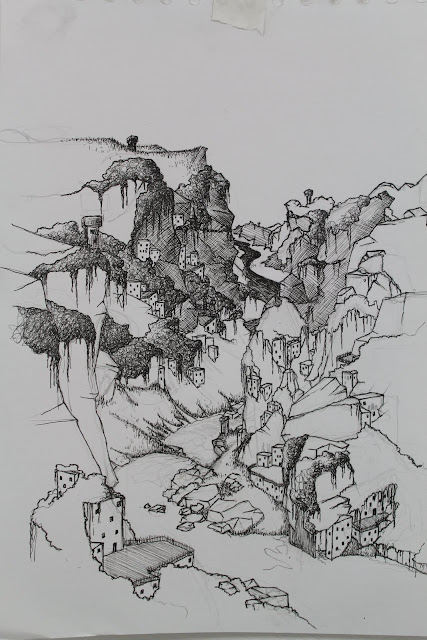Adamowicz was one of the concept artists who worked on Bethesda's
The Elder Scrolls: Skyrim, he worked on the architecture in the game, which embody the cultural and visual aspects of the in game world. He adhered to the text (
The Elder Scrolls series), which has thousand of years worth of fictional history and in depth regional culture when creating his buildings. I think all of my works both contain and, to some extent, are this possibility; of history; of a dreamworld with its own reality and laws. While he had this very specific group of sources for his pieces, they also came from somewhere in the real world,
Skyrim having a very strong Viking motif. This cultural influence is something which I have not looked into specifically but have used as more of a secondary source throughout my project.
What I find interesting in his works also, is that he does not have this luxury of a figurative style, and relies heavily on the culture and also the landscape, much like Alan Lee in his work on Tolkien's books.
Skyrim contains many mountainous regions and he uses these to create his architecture, or even vice versa? Perhaps they are one in the same, much like the architecture in the real world is shaped by the landscape and the people who live there.
This is what I find so interesting about the whole idea, that Adamowicz has used a plethora of existing history to create fantasy. While I supposed that is what I have done by looking at their artists, what is so appealing about fantasy is that it can come mainly from within. When I put down my worlds on paper, I create the history, the people who live there and the culture. While this is sourced from real cultures and people, it is also an extension of myself.
This would probably be the most modern take on fantasy drawings and architecture I have looked at, and seeing these sketches and paintings rendered in full 3D is something I find really exciting. It is also that element of playing god and having complete creative control, even if the concept is not overly specific. I would like to create something like this world with my 3D blocks, still harking back to Escher's pieces and my original research, but creating a small version of a world, like the one featured in
Skyrim.
(unable to find title, below, top) (
Markarth Exterior View, below, bottom)






































